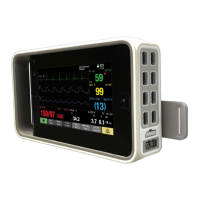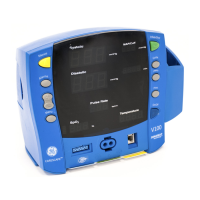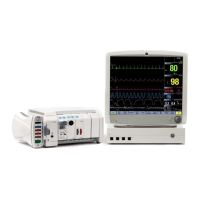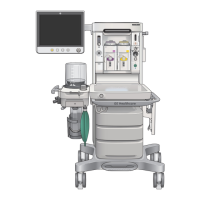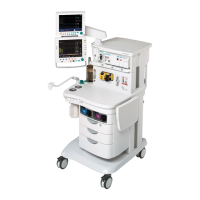EEGandauditoryevokedpotentials
CAUTION
EEGmeasurementisinherentlyverysensitive.Radiated
electromagneticeldsmaycauseerroneousmeasurements
atvariousfrequencies.Donotuseelectricalradiating
equipmentclosetotheEEGmeasurementmodule.Details
regardingradiatedeldstrengthsaregiveninthetechnical
specications.
EEGindicationsforuse
TheEEGmodule,E-EEG,andtheheadbox,N-EEG,andaccessoriesareindicatedfor
themonitoringofelectroencephalograph(EEG),frontalelectromyography(FEMG),and
auditoryevokedpotentials(AEP)ofallhospitalpatients.
Thedeviceisindicatedforusebyqualiedmedicalpersonnelonly.
EEGmeasurementlimitations
●ThismeasurementisnotavailableintheNICUsoftwarepackage.
●E-modulesarenotsuitableforusewithneonatalpatients.
●Externalradiatingdevicesmaydisturbthemeasurement.
EEGpointstonote
●EEGisaverysmallsignalandpronetoartifactssuchasmovement,shivering,
sweating,eyemovement,frontalEMG,externalelectricalinterference(other
electricaldevices),andinternal(ECG)electricalinterference.
●Goodelectrodecontactsareimperativeforhigh-qualityEEGmeasurement.
●Keepelectricaldevicesasfarawayfromthepatientaspossible.
●Useshortcables,orbraidthelongones.
●Keeptheheadboxasclosetothepatient'sheadaspossible.
●EEGndingsareusuallysensitivebutnotspecictotheunderlyingcause.
●EEGndingsshouldbeassessedinconjuctionwith:
■othermonitordataandclinicalassessment
■neurologicalstatusofthepatient
■factorsthatinuenceEEG(likebloodow,neurologicalpathologies,underlying
illnesses,andtemperature).
●Aclothbandageovercupelectrodesandaroundthepatient'sheadmayenhance
goodcontact.
374CARESCAPEModularMonitors2062971-001
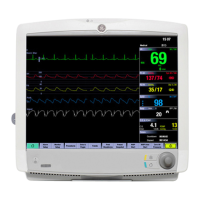
